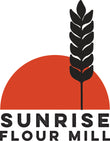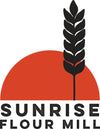How We Make our 100-year-old Starter
Using freeze-dried technology, we are able to mail samples of this starter nationwide
How to make your bread more or less sour
Simple tricks to control the flavor of your sourdough bread
Need more supplies?
Sourdough Starters
Sourdough FAQs
After you become familiar with making sourdough bread, you can use our same recipe and replace some of the Heritage White Flour or Heritage Bread Blend Flour with Heritage Whole Wheat Flour to make whole wheat sourdough bread. When you blend your Heritage Whole Wheat Flour with the Heritage White Flour, you will get the rise of the White Flour and the flavor and nutrition of the Whole Wheat. Try starting with 20% Whole Wheat and 80% White. You can then slowly adjust your percentage each time you make a loaf until you reach your desired loaf.
We recommend using the Heritage White Flour or the Heritage Bread Blend as you are learning to make sourdough bread. These two flours are the most forgiving. Once you start getting the hang of sourdough baking- you can start incorporating Heritage Whole Wheat Flour or Rye Flour.
Tap water can be troublesome to your starter. City water contains chlorine and other chemicals. These chemicals are added to city water to kill unwanted bacteria.
What makes great sourdough bread are wild yeasts and good bacteria that are all around them in the air. The last thing we want to do is kill that good bacteria with the chemicals in tap water.
Luckily, it’s easy to prepare tap water for sourdough baking or feeding. Simply boil it and let it sit on your counter for a few hours. This allows the chemicals to evaporate. You can make a big batch of water and keep it in a special pitcher so you do not have to do this step each time you feed your starter or bake bread.
Our favorite way to grease a bread pan is to use a combination of oil and butter!
Check out this article on how to make your sourdough bread more sour.
That is called hooch. Hooch is a natural alcohol by-product of fermentation. It’s ok to either stir it in or pour it off. Whenever you get hooch, and you may even when feeding it regularly, it’s just a sign it’s hungry. Clean it off with a spoon until you find some that is the color you remembered. As long as there is no mold, go ahead and feed your starter as you normally would.
If you’ll be leaving for multiple weeks- thicken the starter so it is like a stiff, dry bread dough. Cover it with flour and put it in the refrigerator. To revive it, shake off the excess flour and reach into the center of the starter to get a spoonful of what looks like an active starter. Proceed with feeding it and building it up as before.
We recommend you feed your starter once a week or before you are going to bake.
Place your packet into the freezer and activate it as soon as you are able.
Yes! Simply half all the ingredients.
The packet you received is our starter in a dehydrated state. You will have to reconstitute the starter following our 5 day reconstitution schedule. At the end of the 5 days, you will have more than 250g of starter.
You should cover the jar enough so it doesn't dry out and unwanted items stay out but you don't want it air-tight. If your mason jar has that rubber gasket, remove it and close the lid. If your mason jar doesn't have a lid, you can just put a sandwich bag over the top secured with a rubber band. Most importantly, you don't want it completely air-tight because you want gas to be able to escape.
Sourdough discard is the part of your starter that is removed before feeding what’s left in the jar. Everytime you feed your starter, it will grow. Many people will discard some starter before feeding so the starter remains a manageable size. Some people put the discard right into the trash and some add it to their baked goods. Here is how to add discards to your baked goods.
420g


























